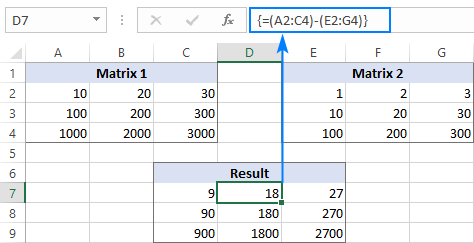How to Properly Write an Address: Essential Tips for 2025

Apply Now



How to Properly Write an Address: Essential Tips for 2025
Understanding the Importance of Proper Addressing
Writing an address correctly is not just about following a set of rules; it plays a crucial role in ensuring that your correspondence—or packages—reach the intended recipient swiftly and without confusion. A well-structured address is essential for a variety of purposes, including personal mail, business correspondence, and international shipping. Incorrectly addressing a package can lead to delays, returns, or, worse, your mail getting lost altogether. This article aims to provide a comprehensive guide on how to write an address properly, including the right address format, components, and layout. Whether you're sending a letter, parcel, or any kind of correspondence, understanding the basic principles of address formatting can significantly enhance your efficiency and reduce common address mistakes. With the rise of e-commerce and online communications, knowing the correct mailing address format has become more vital than ever. The essential takeaways from this guide include proper structure and organization, the importance of using standard abbreviations, and tips on avoiding common pitfalls in address writing. With these strategies, you can ensure a correct mailing address structure that guarantees your correspondence arrives as intended.Address Structure and Components
To write an address properly, you need to understand its basic components. Every address typically contains several key parts: 1. **Recipient Name**: Always start with the name of the person or the organization to whom you're sending the mail. 2. **Street Address**: This includes the street number and name. Be sure to use the correct spelling and capitalization. 3. **City, State, and ZIP Code**: The city and state abbreviation should be followed by a ZIP code. In the US, this is usually a five-digit number, though an extended version (ZIP+4 code) can be used for more precision. 4. **Country Name**: Especially important for international addresses, always include the country name. Each component plays a distinct role in ensuring that your address is both clear and accurate. For international addresses, the order may vary, but understanding how to format them correctly will significantly improve your mail's chances of reaching its destination without incident. It's essential to note that using the correct postal code and city name can make all the difference. For example, if your address includes a common street name, ensure you are using the proper street designation to avoid misdelivery. Always double-check your address formatting to ensure clarity and correctness, especially for international mailing.
Correct Address Format: A Step-by-Step Guide
To help you navigate through the complexities of proper address formatting, we've compiled a step-by-step guide that can serve as your go-to address writing manual: 1. **Start with the Recipient Name**: Write the full name of the individual or organization. 2. **Add the Street Address**: This should include any unit number or building name. For example, if you're sending mail to an apartment, it might look like "Apartment 5B" or "Unit 205". 3. **Include City and State**: Write the city name followed by the appropriate two-letter state abbreviation. For example, "Los Angeles, CA". 4. **Add the ZIP Code**: Follow the city and state by the ZIP code. Ensure that it is accurate, as discrepancies can lead to misdelivery. 5. **Final Touch – Country Name**: If you are mailing internationally, conclude by stating the full country name in uppercase letters, such as "USA" for the United States. 6. **Double-Check for Abbreviations**: Use standard postal abbreviations to avoid confusion. For instance, "St." for "Street", "Ave." for "Avenue", etc. 7. **Proper Notation and Commas**: Use commas correctly to separate the different parts of the address. This step-by-step process can effectively guide you in writing postal addresses clearly and concisely. Using this method can minimize address mistakes to avoid potential delivery issues. Focusing on clarity in addressing significantly enhances the chances of your letters reaching their destination without hiccups.
Common Address Mistakes and How to Avoid Them
Even with the best intentions, people often make address mistakes that can lead to significant complications. Here are some of the most common pitfalls and tips on how to prevent them: 1. **Omitting Parts of the Address**: Always ensure that all components, including unit numbers, street names, ZIP codes, and country names, are included. 2. **Incorrect Use of Abbreviations**: While using abbreviations can save space, they should be standard, widely recognized ones. For example, don't use unconventional abbreviations that may confuse postal workers. 3. **Failure to Verify Address Accuracy**: Before sending out your mail, use online address checking tools to verify the format and existence of the address. There are several tools available that can help you streamline this process. 4. **Incorrect Order of Components**: Remember that the order of address components can vary between countries. Make sure to double-check specific guidelines for international addresses. 5. **Legibility Issues**: Write clearly and avoid using cursive or complicated handwriting to ensure that your address is easy to read. If using online forms, ensure that you input the information neatly. By being aware of these common address mistakes, you can proactively take steps to avoid them. Address verification and ensuring clarity are essential methods to ensure that your mail reaches the right hands promptly.Address Formatting Rules for Different Contexts
Different contexts sometimes warrant variations in address formatting. Learning these will provide clarity and utility when you write addresses for various occasions. 1. **Residential Addresses**: For personal letters, you will typically format the address as mentioned above, with attention to detail being crucial. 2. **Business Addresses**: When addressing corporate mail, including the company's full name and any specific department can help in proper sorting. 3. **International Addresses**: As different countries have different formats, familiarize yourself with international addressing standards. For instance, placing the country name at the end is common in many nations. 4. **Packages and Deliveries**: Ensure that dimensions and weight are accounted for if you're sending items. Properly formatting the address on a shipping label can help streamline the delivery process. By following specific address formatting rules, you can tailor your address to fit the context you're addressing, ensuring effective communication and delivery.Final Thoughts on Address Writing
Ensuring that you know how to write an address properly is not just beneficial, but essential in our increasingly digital and interconnected world. By mastering the basics of address structure, common address mistakes, and the unique formats required for various contexts, you can streamline your communication effectively. Understanding how to format an address in a letter, or writing addresses for different countries will save you from the hassle of mail confusion or lost packages. Simplifying the address writing process is an effort that pays off in clarity, efficiency, and successful delivery outcomes. By implementing these address writing tips and utilizing online address format tools, you'll be well on your way to addressing letters correctly while minimizing errors. In a world where clear communication is vital, recognizing the importance of properly formatted addresses cannot be overstated. Always ensure that your addresses are organized as per prevailing standards to guarantee they reach their intended destination without a hitch.Common Questions about Address Writing
1. **What are the most important components of a complete address?** A complete address includes the recipient's name, street address, city, state, ZIP code, and country name for international addresses. 2. **How can I avoid common address mistakes?** Double-check your address for completeness, use standard abbreviations, and consider using online address verification tools. 3. **What should I remember when addressing envelopes?** Make sure the address is clearly written, properly organized, and that the correct postage is applied. 4. **Are there variations in address formats for different countries?** Yes, international address formats can differ significantly, so be sure to research specific guidelines when mailing abroad. 5. **Why is address verification important?** Address verification helps to ensure that the address is valid and correctly formatted, minimizing the chances of mail being lost or delayed. By keeping these tips and insights in mind, you'll be better equipped to handle address writing with confidence and precision.